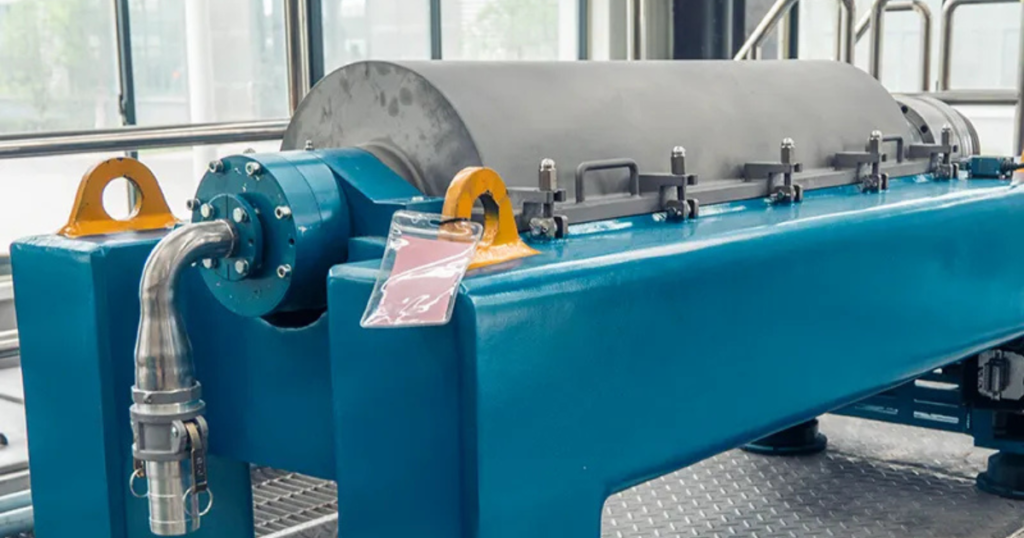Imagine a wastewater treatment plant struggling to keep up: Raw sewage piles up, treatment cycles drag on for hours, and the sludge left behind is so wet it’s hard to dispose of. Sound familiar? For plant operators, this isn’t just a daily headache—it’s a problem that eats into budgets and slows down compliance with environmental rules. But here’s the good news: The Decanter Centrifuge is a game-changer for sewage treatment. It turns slow, messy processes into fast, efficient ones, separating solids from liquids in a fraction of the time older equipment takes. Today, we’re diving into how this machine works in sewage treatment, the key roles it plays, and why it’s become a must-have for plants looking to work smarter—not harder. Whether you’re dealing with municipal wastewater or industrial effluent, this guide will show you exactly how the Decanter Centrifuge adds value to your operations.
Decanter Centrifuge for Municipal Wastewater Primary Treatment
Municipal wastewater—think the water from homes, schools, and offices—starts its journey with primary treatment, and the Decanter Centrifuge is the “first responder” here. Before this machine, plants relied on gravity settlers: big tanks where solids sink to the bottom over 4-6 hours. But waiting that long means backups, especially during peak usage (like weekday mornings when everyone showers and does laundry).
The Decanter Centrifuge changes the game by using centrifugal force to speed up separation. As wastewater enters the machine’s rotating drum, the force pushes heavy solids (like food scraps, paper bits, and sand) to the drum wall, while clean water flows out the other end—all in 15-20 minutes. A mid-sized city plant switched to this setup and cut primary treatment time by 75%. But it’s not just speed: The centrifuge also removes 90% of suspended solids, which means less work for the next treatment stages. Plus, the solids it collects (called primary sludge) are drier than what gravity settlers produce—so the plant hauls away less waste, saving on disposal costs. For municipal plants juggling high volumes and tight schedules, the Decanter Centrifuge turns primary treatment from a bottleneck into a smooth step.
Decanter Centrifuge in Industrial Effluent Treatment
Industrial effluent—wastewater from factories, refineries, or chemical plants—is trickier than municipal wastewater. It often has thick, sticky solids or even toxic substances, and old equipment (like filter presses) struggles to handle it without clogging or leaving too many contaminants behind. That’s where the Decanter Centrifuge shines—it’s the “problem-solver” for tough industrial sewage.
Take a chemical plant, for example: Its effluent has a mix of chemical residues and fine solids. A filter press would take 3 hours to separate them, and the filtered water still had high chemical levels. After switching to a Decanter Centrifuge, the process takes 45 minutes, and the water meets discharge standards on the first pass. How? The centrifuge’s adjustable speed lets operators tweak the force—more force for thick solids, less for delicate separation. A food processing plant also benefits: It uses the centrifuge to remove pulp and oil from wastewater, turning the recovered oil into a byproduct they sell (adding a small revenue stream). For industrial plants, the Decanter Centrifuge isn’t just about compliance—it’s about turning waste into efficiency, and sometimes even profit.
Decanter Centrifuge for Sewage Sludge Dewatering
After wastewater goes through primary and secondary treatment, what’s left is sludge—a thick, wet mess that’s 95-98% water. Hauling this wet sludge to landfills is expensive (you’re paying to transport mostly water) and bad for the environment. Sludge dewatering is the solution, and the Decanter Centrifuge is the “workhorse” here.
Older dewatering methods, like belt presses, need lots of chemicals to thicken the sludge first, and they still leave sludge that’s 70-75% water. The Decanter Centrifuge skips the extra chemicals and dries sludge to 60-65% solids—all in one step. Here’s how: Sludge enters the centrifuge’s drum, where high-speed rotation squeezes out water. The dry sludge comes out as small pellets, easy to handle and transport. A wastewater plant in a industrial park used to spend $10,000 a month on sludge hauling. After switching to the Decanter Centrifuge, that cost dropped to $4,000—because the sludge volume was cut in half. Even better, some plants use the dry sludge as fuel for boilers or as a soil amendment (if it’s non-toxic), turning waste into a resource. For any plant looking to cut sludge costs, the Decanter Centrifuge is a no-brainer.
Efficiency and Environmental Benefits of Decanter Centrifuge in Sewage Treatment
At the end of the day, the Decanter Centrifuge isn’t just about getting the job done—it’s about getting it done better for your budget and the planet. Let’s break down the benefits. First, energy efficiency: Unlike big gravity tanks or energy-hungry filter presses, the Decanter Centrifuge uses less power per ton of wastewater. A plant in a coastal city reported a 20% drop in energy bills after replacing old equipment with this centrifuge.
Second, environmental compliance: Governments are cracking down on wastewater discharge limits, and the centrifuge helps plants meet those rules easily. It removes more contaminants, so the water released into rivers or oceans is cleaner. A plant that was fined twice for exceeding limits hasn’t had a violation since using the Decanter Centrifuge. Third, space savings: Gravity tanks take up huge chunks of land, but the centrifuge is compact—one machine replaces multiple tanks, freeing up space for other uses. For a small plant in a crowded urban area, this meant adding a new storage facility without buying more land. All these benefits add up: The Decanter Centrifuge doesn’t just improve sewage treatment—it makes your plant more sustainable and cost-effective.
Conclusion
The Decanter Centrifuge has become an irreplaceable tool in sewage treatment, whether for municipal wastewater primary treatment, tough industrial effluent, or sludge dewatering. It solves the biggest pain points plant operators face: slow processes, high costs, and struggling to meet environmental rules. By using centrifugal force to speed up separation, it cuts treatment time, reduces sludge volume, and lowers energy and disposal expenses—all while delivering cleaner water.
For wastewater plants, this machine isn’t just an upgrade—it’s a way to future-proof operations. As volumes grow and regulations get stricter, the Decanter Centrifuge keeps up, adapting to different sewage types and delivering consistent results. Whether you’re a municipal plant handling daily household waste or an industrial facility tackling tricky effluent, the Decanter Centrifuge helps you work more efficiently, save money, and do right by the environment. It’s an investment that pays off in smoother operations, lower costs, and peace of mind.

